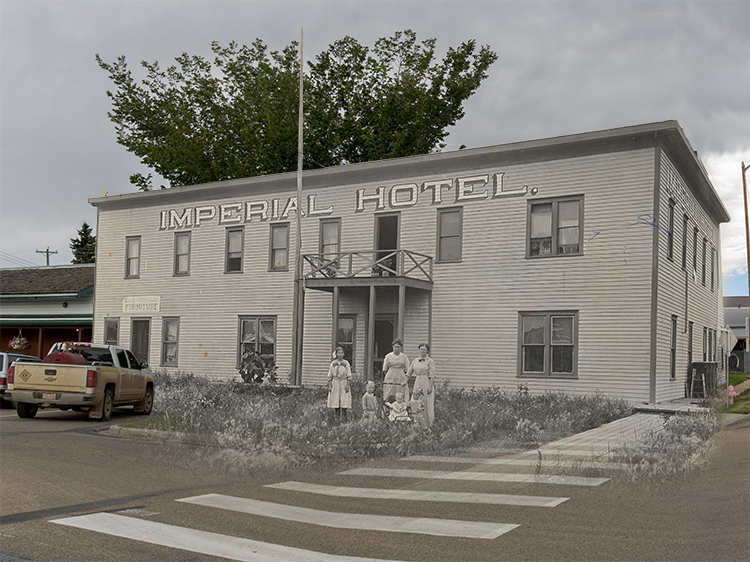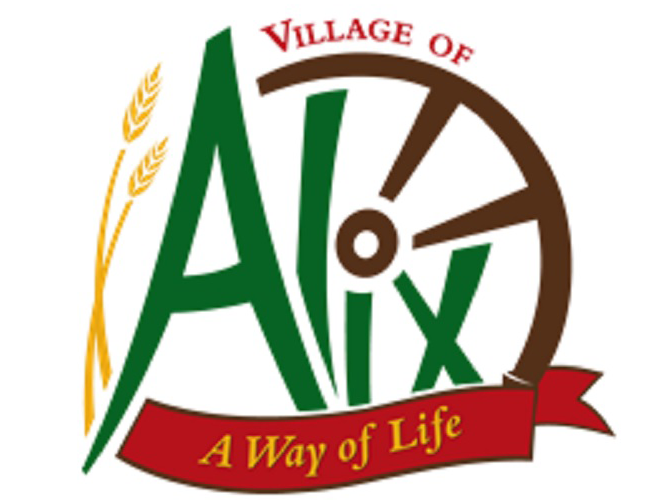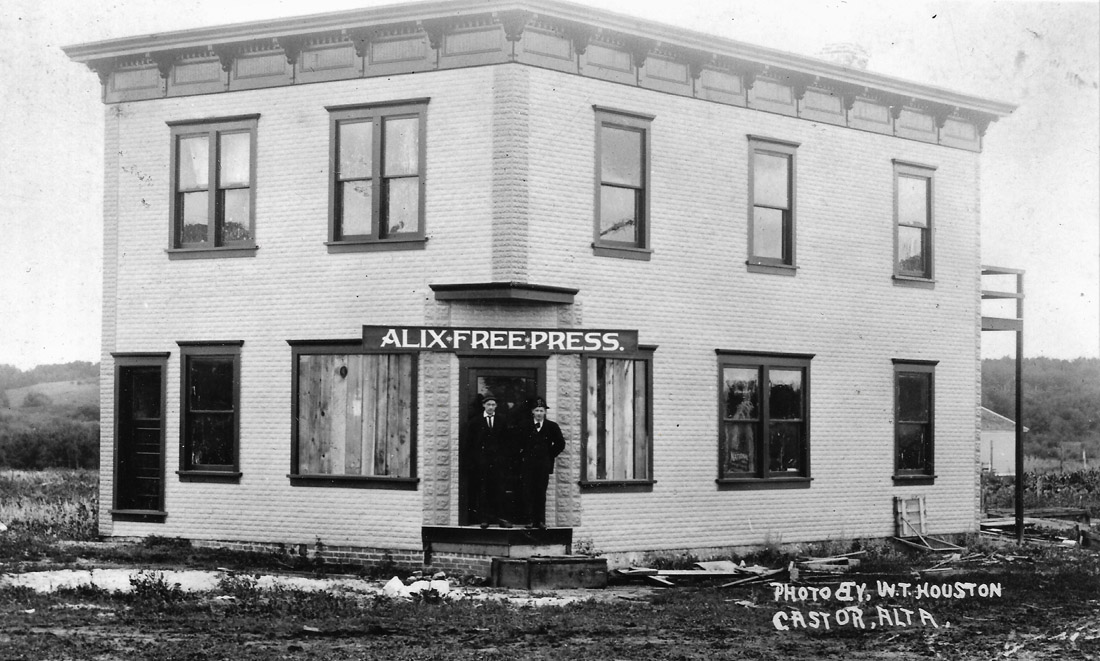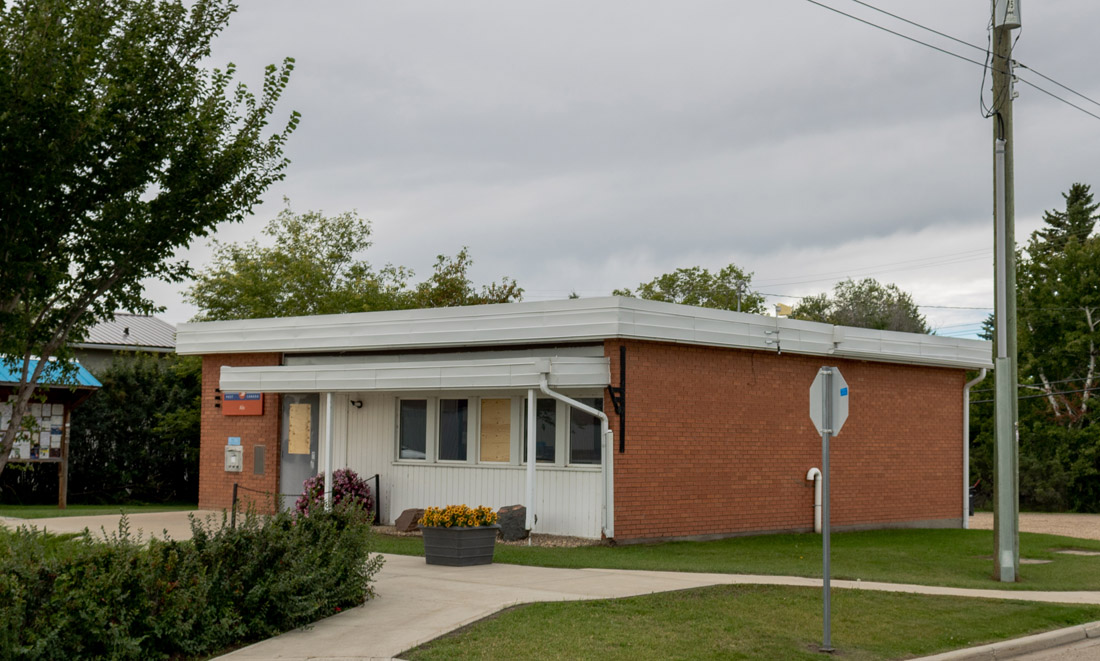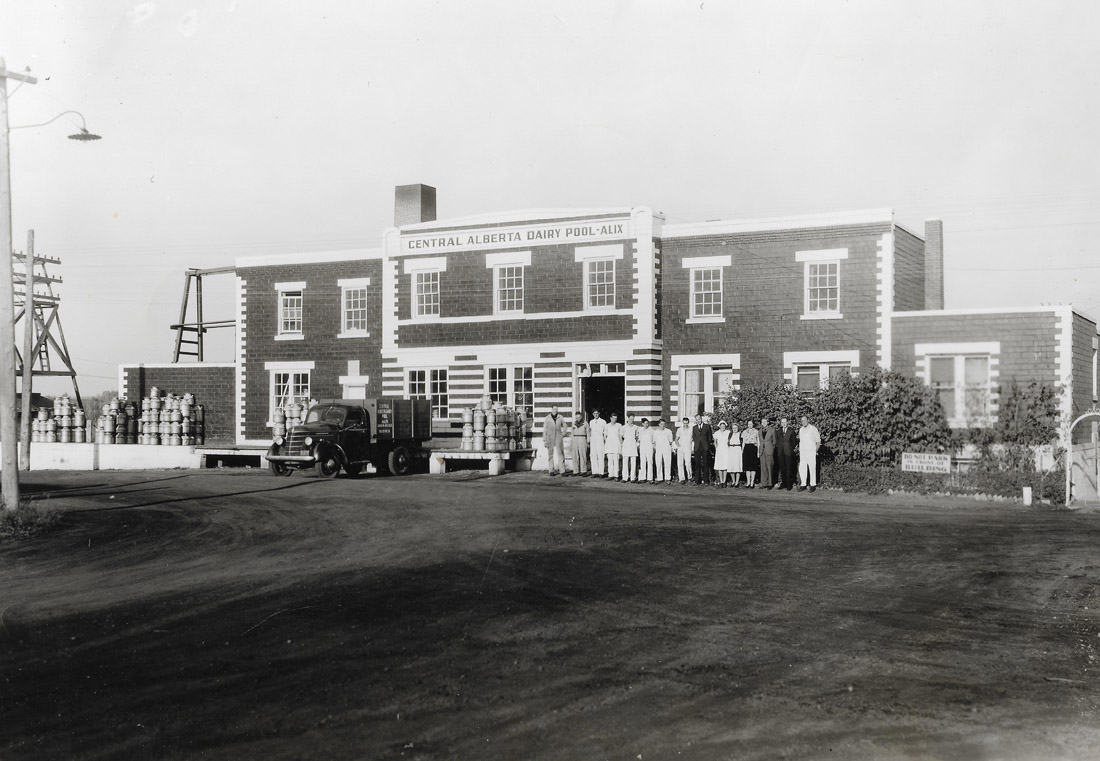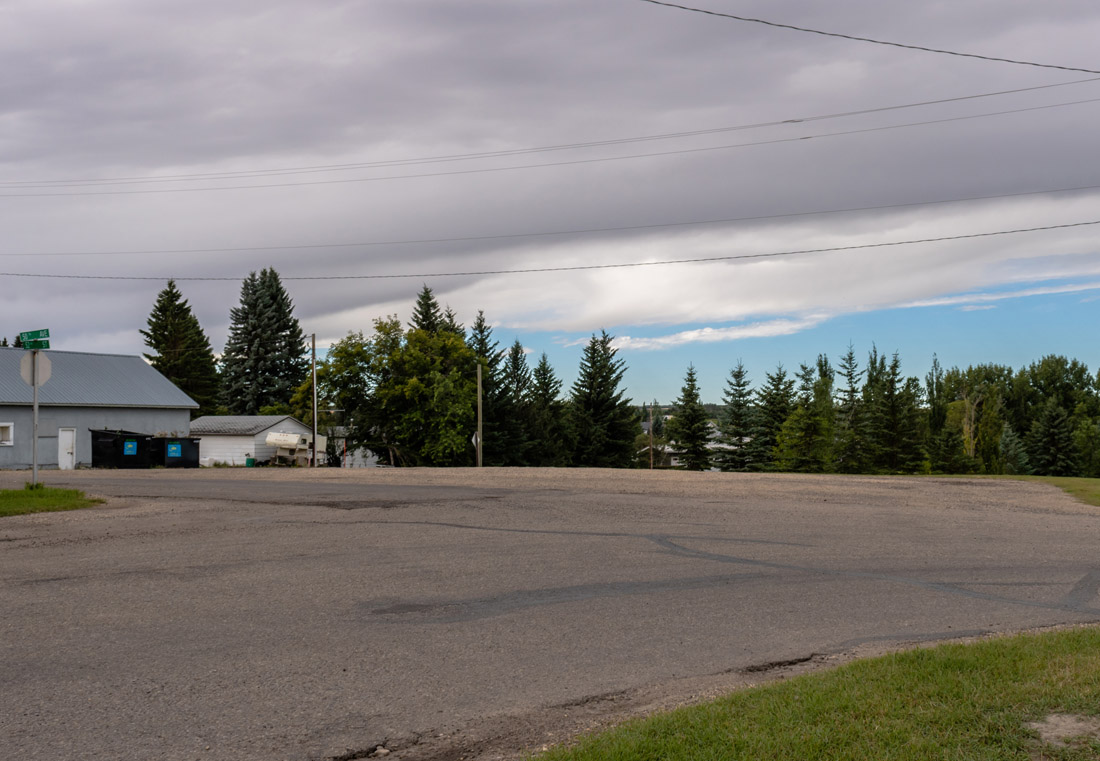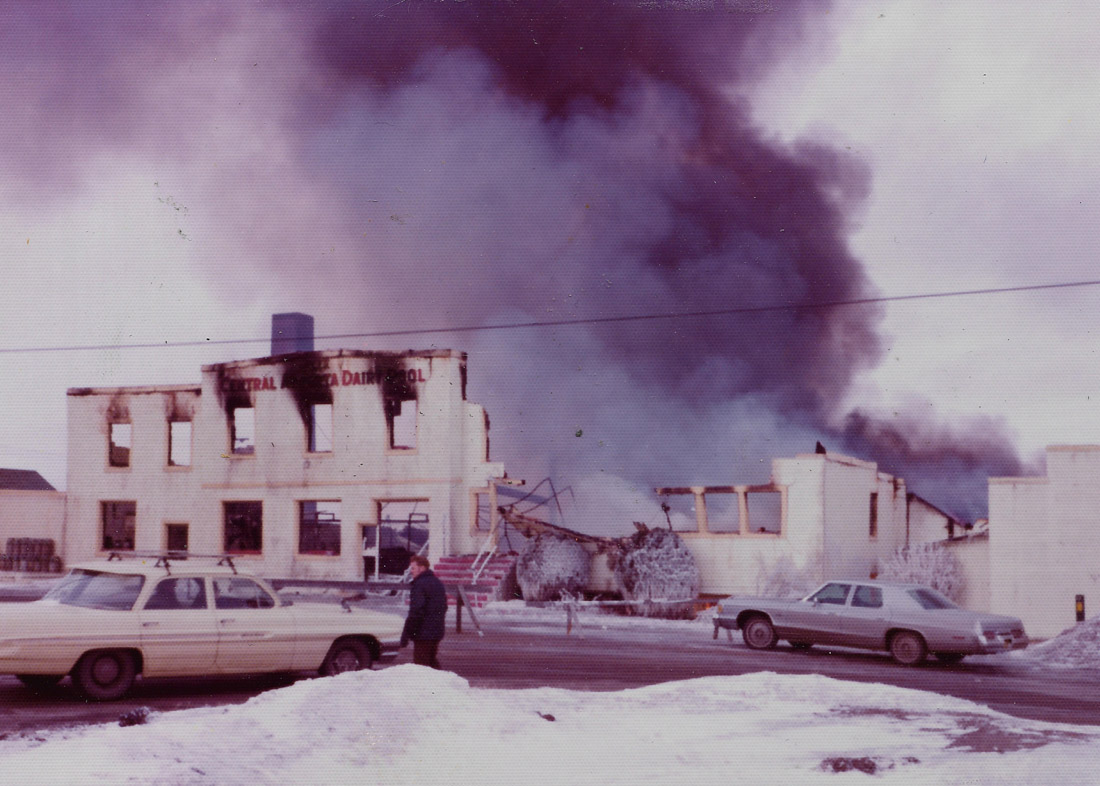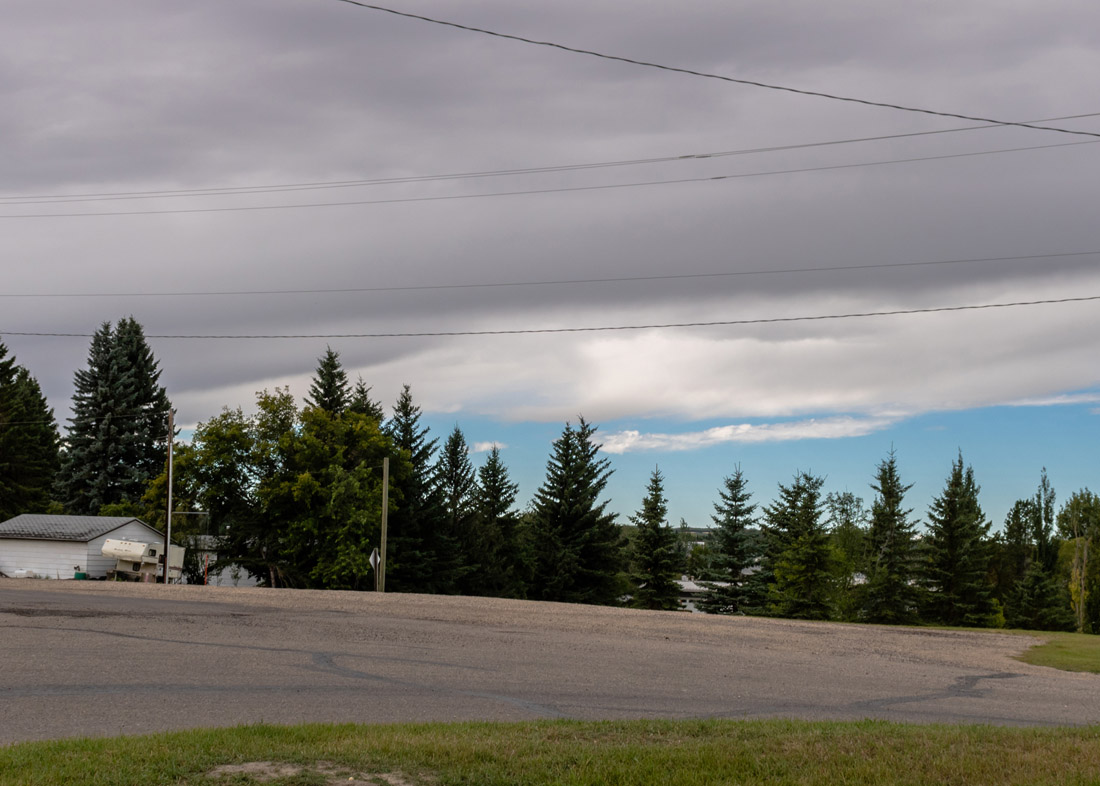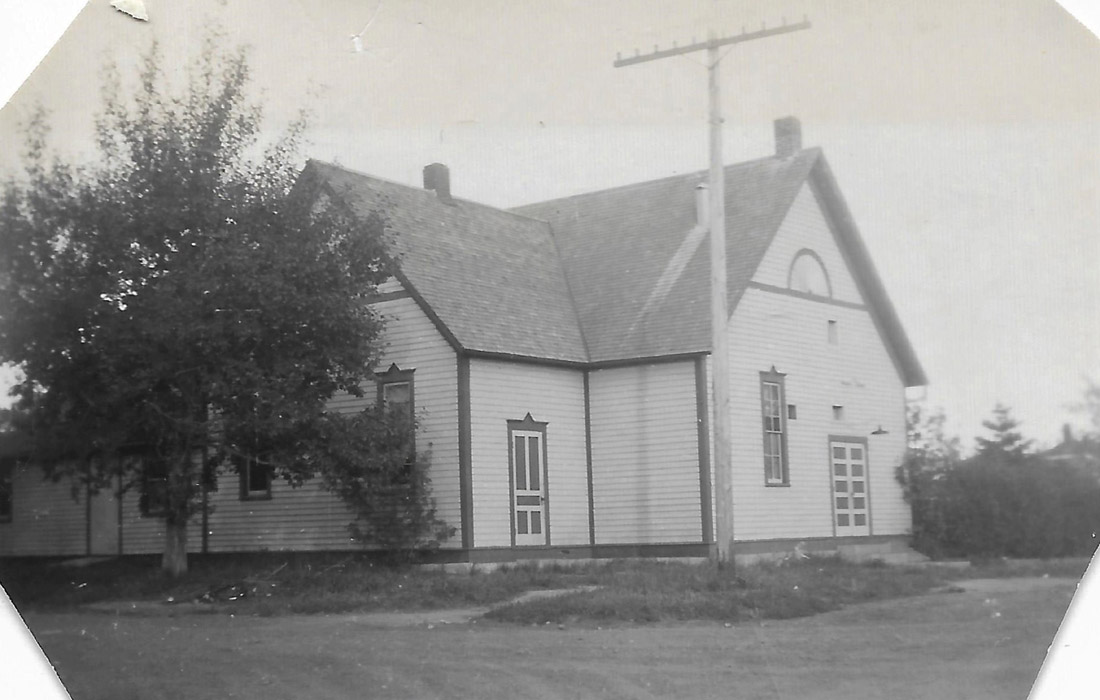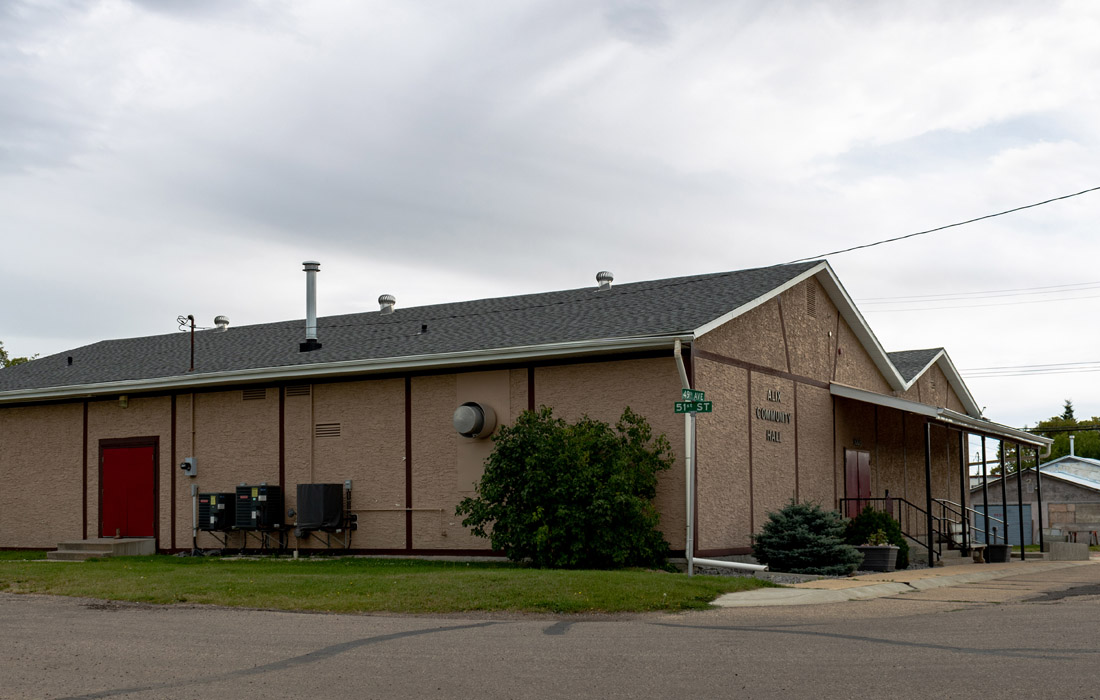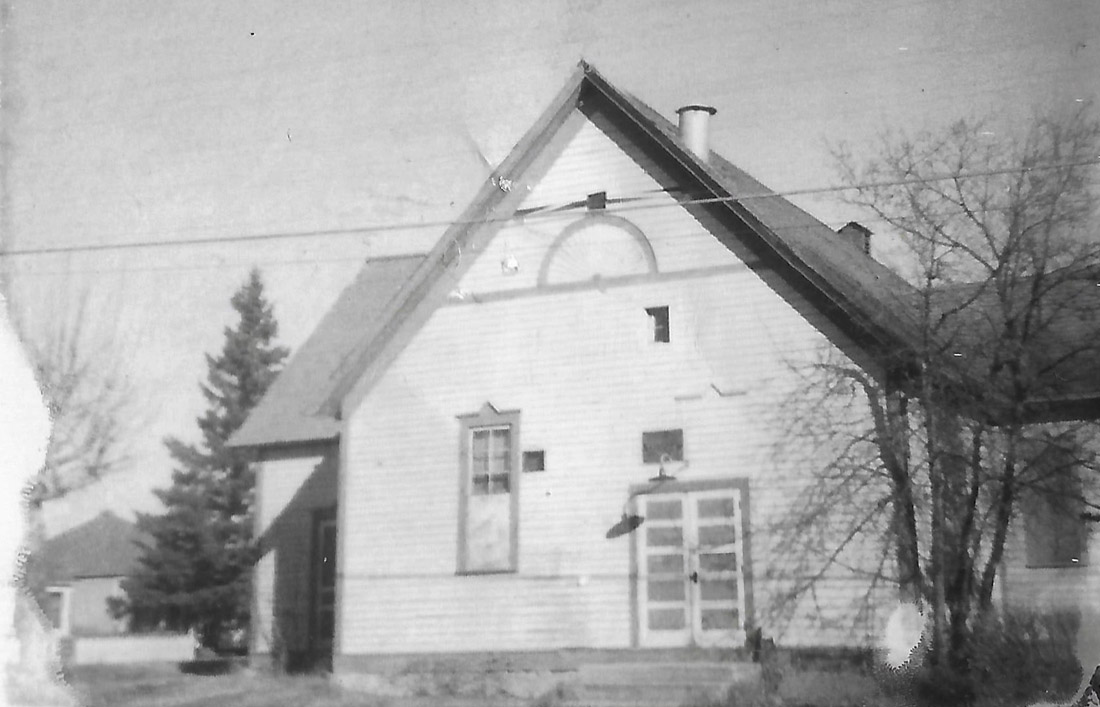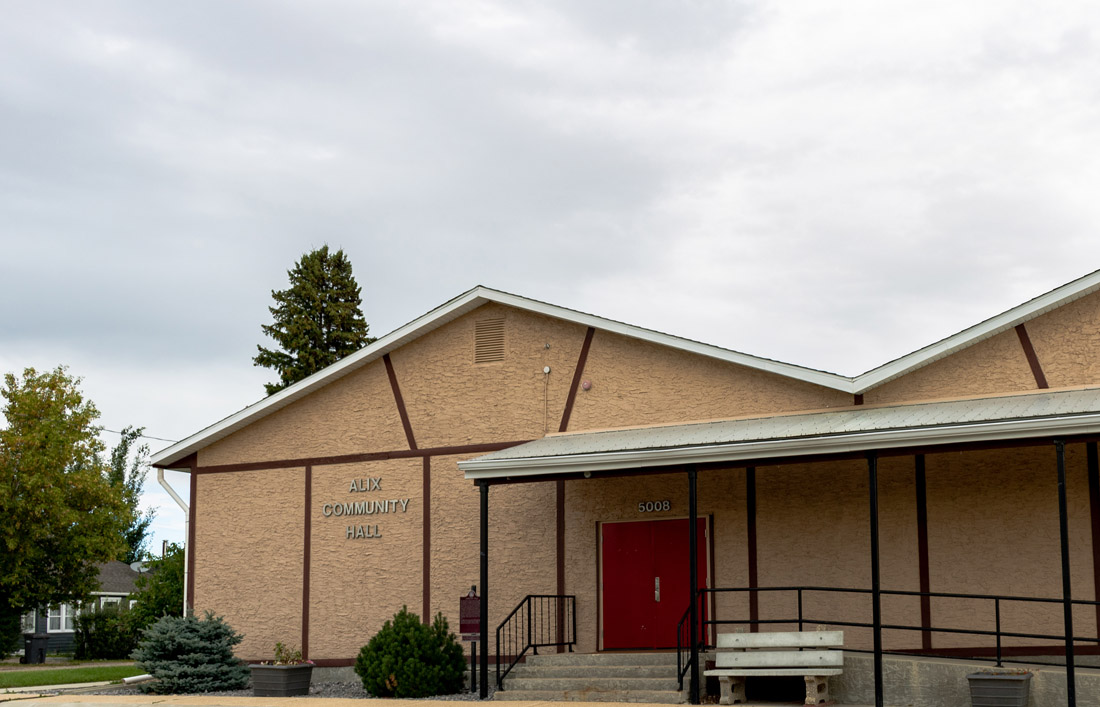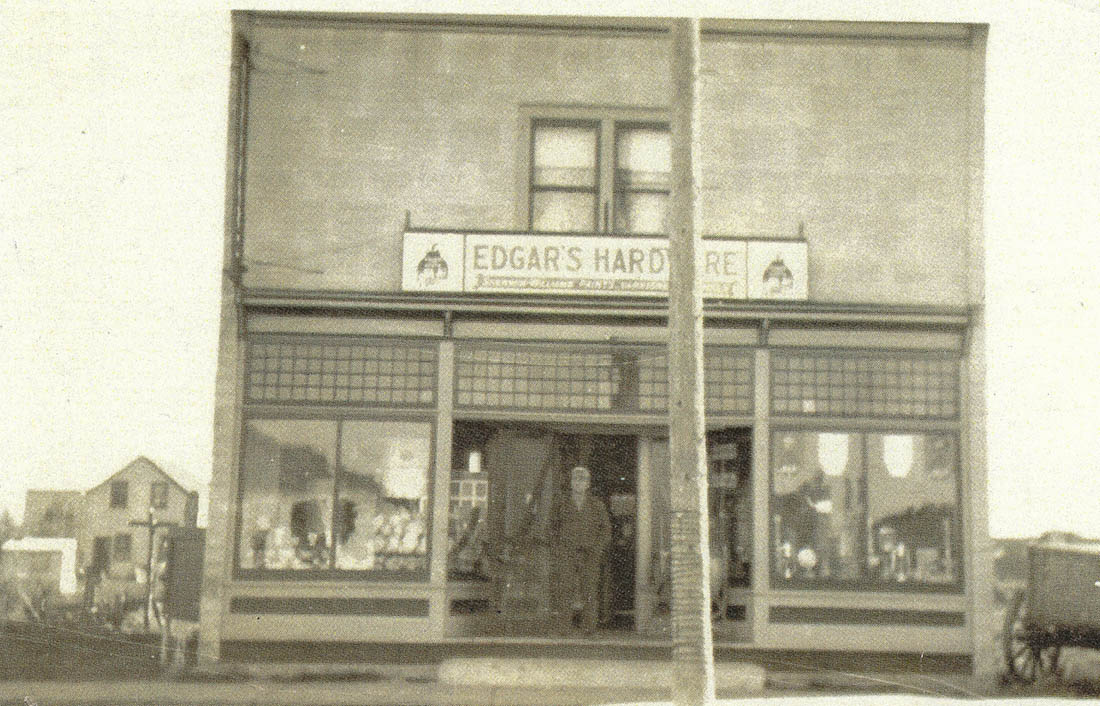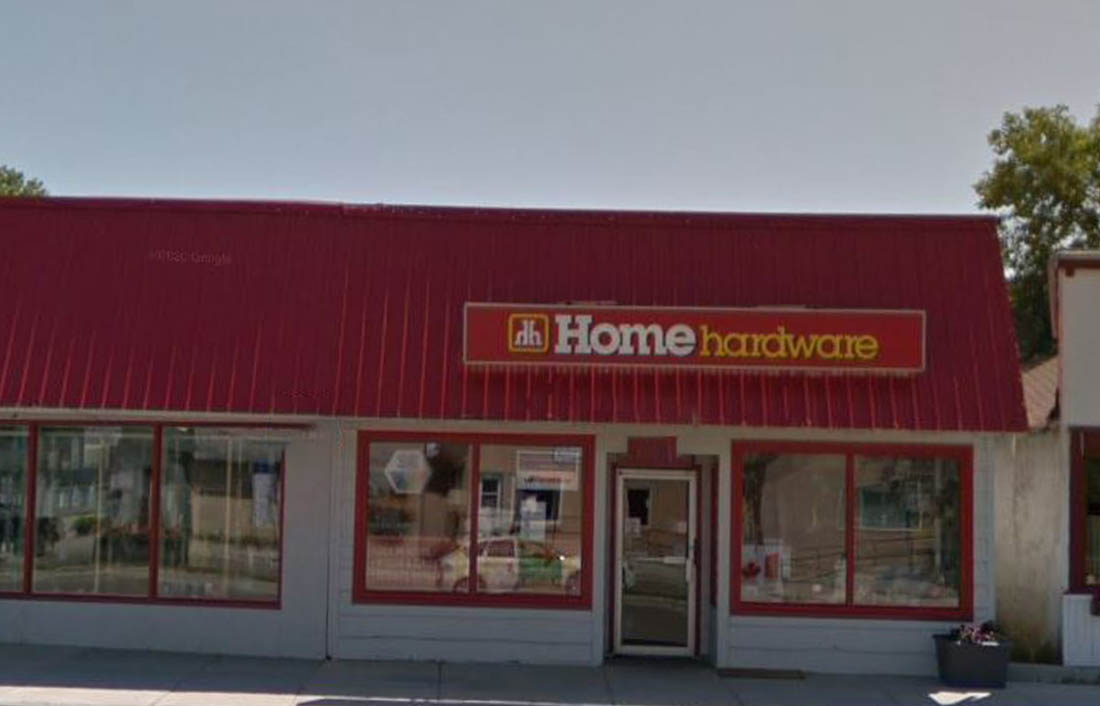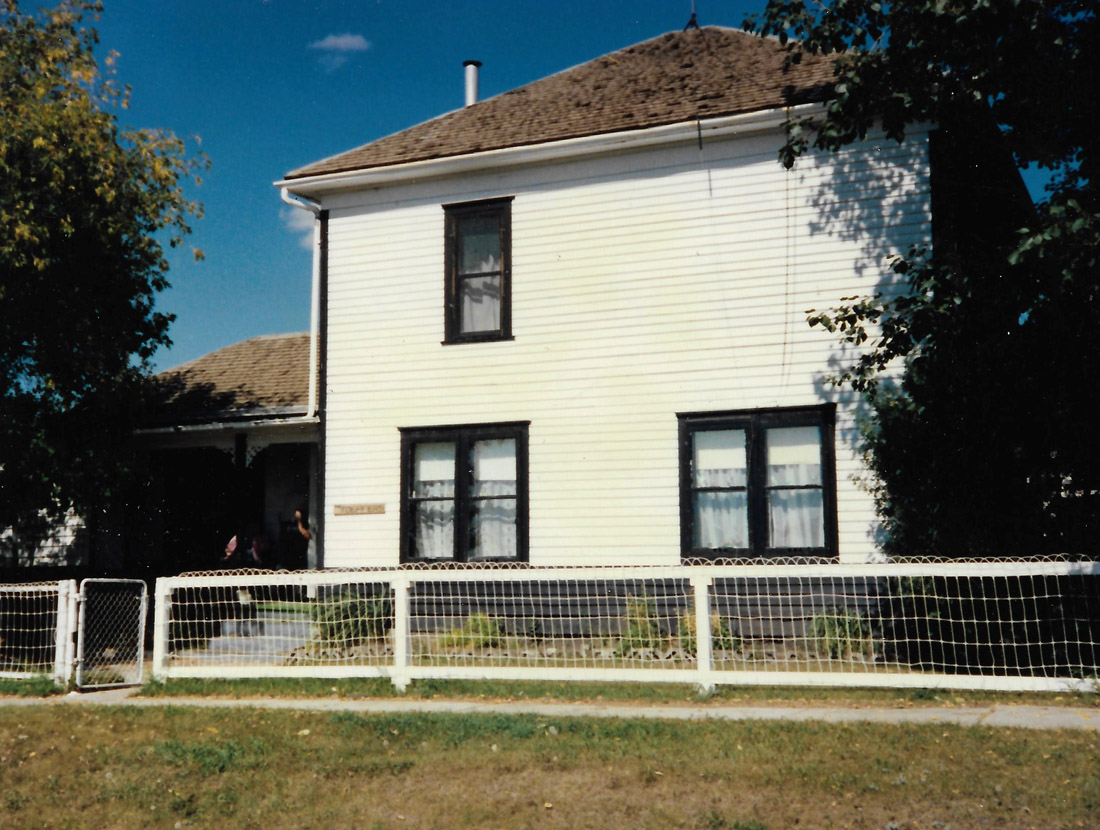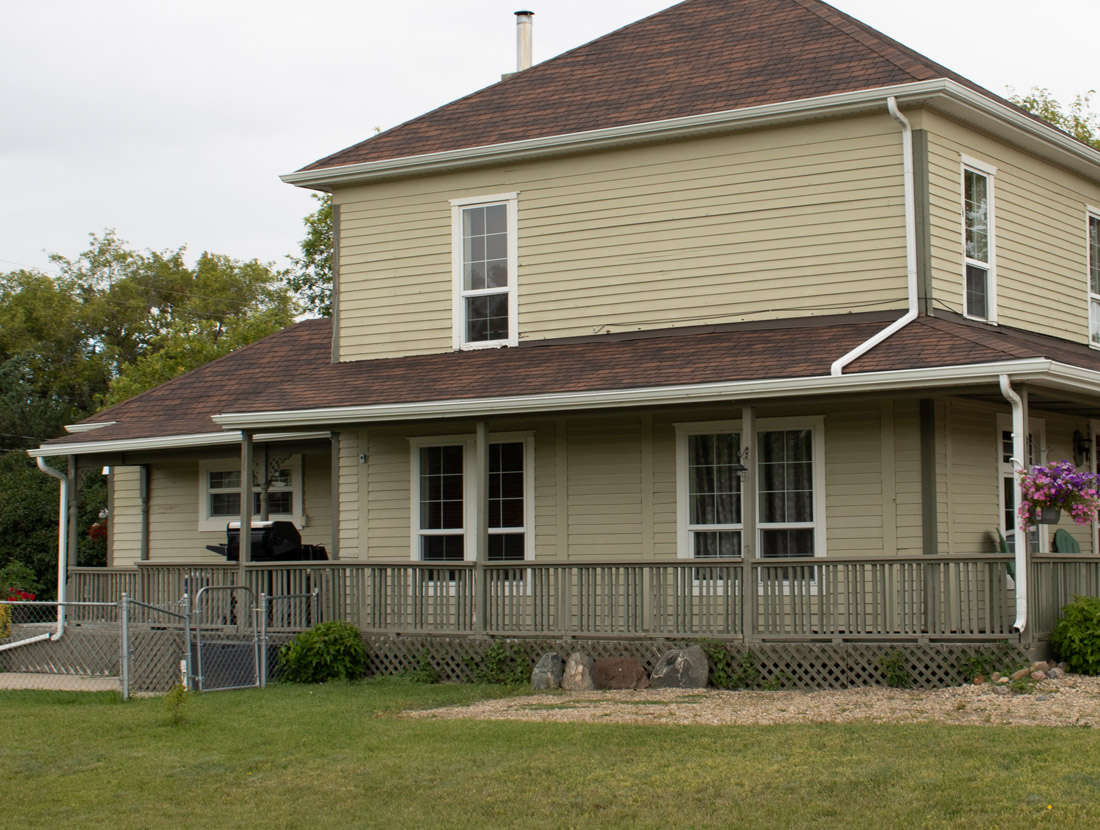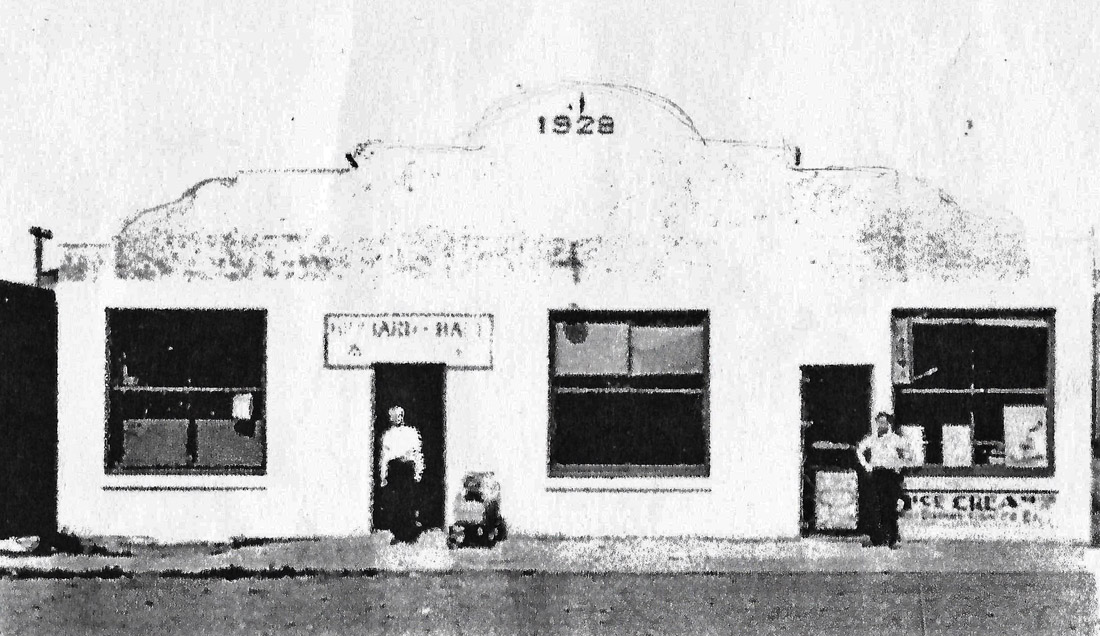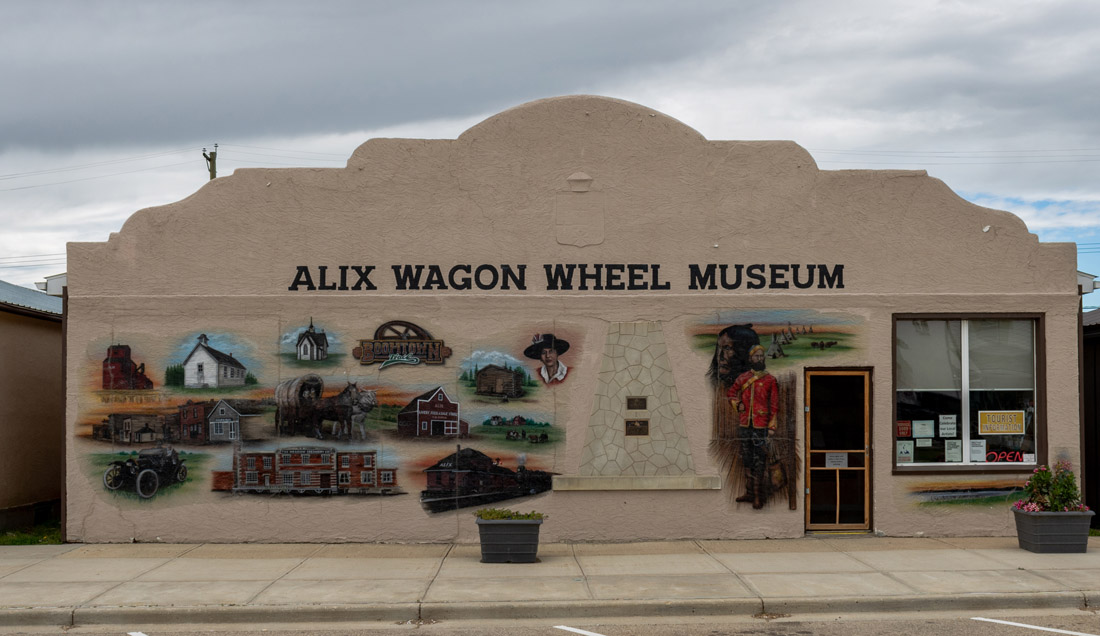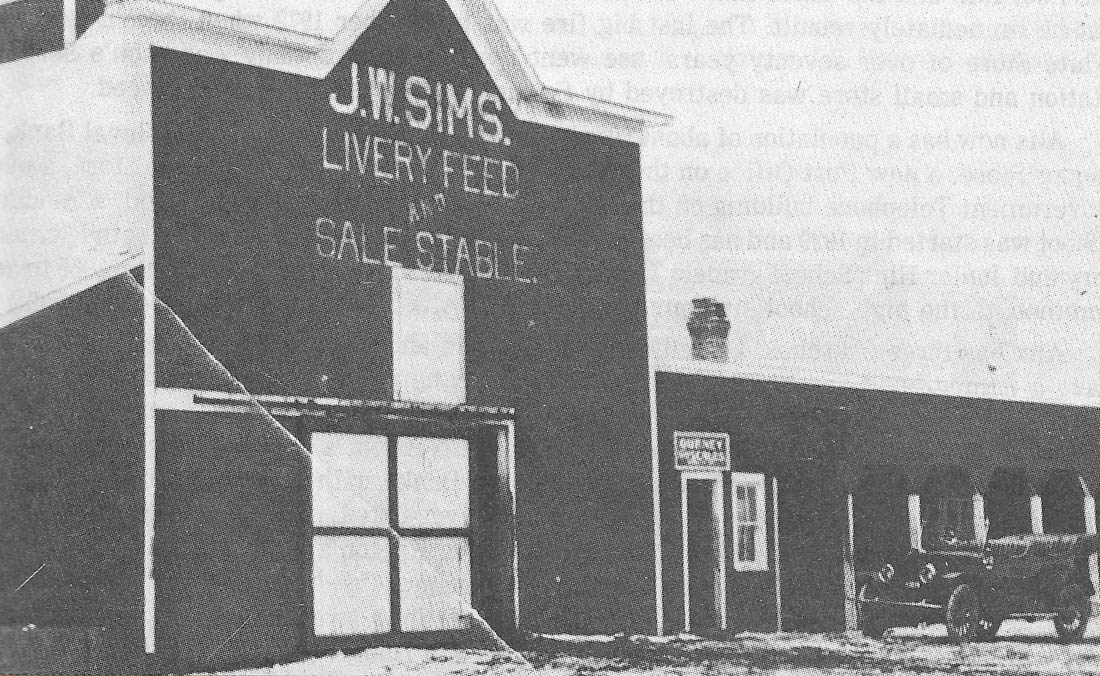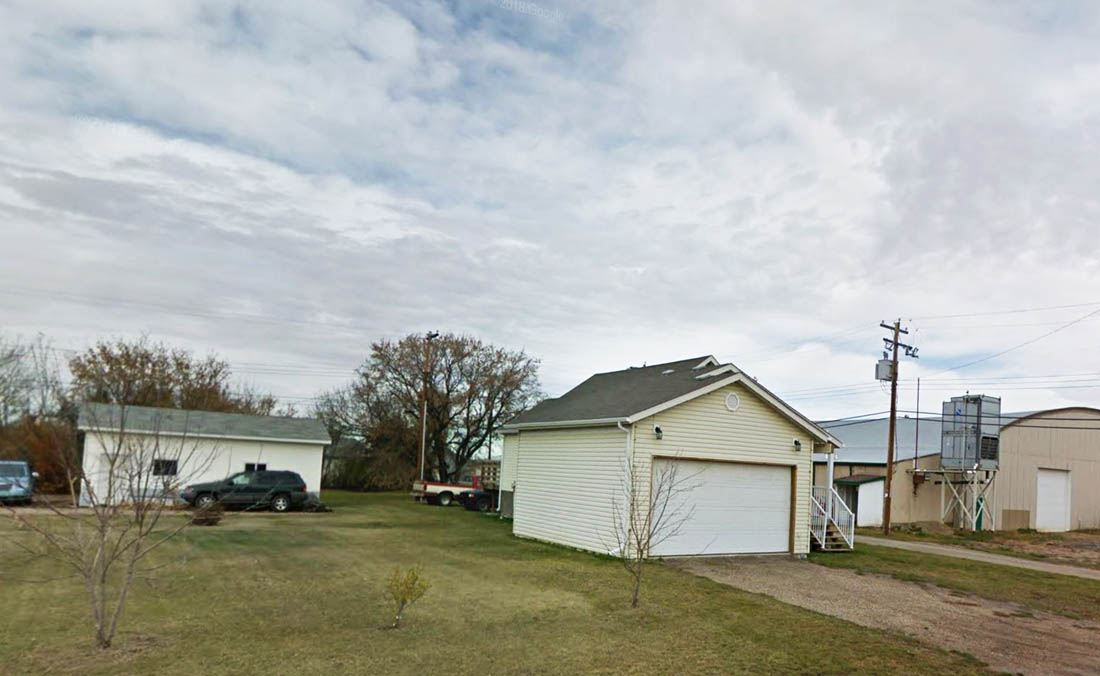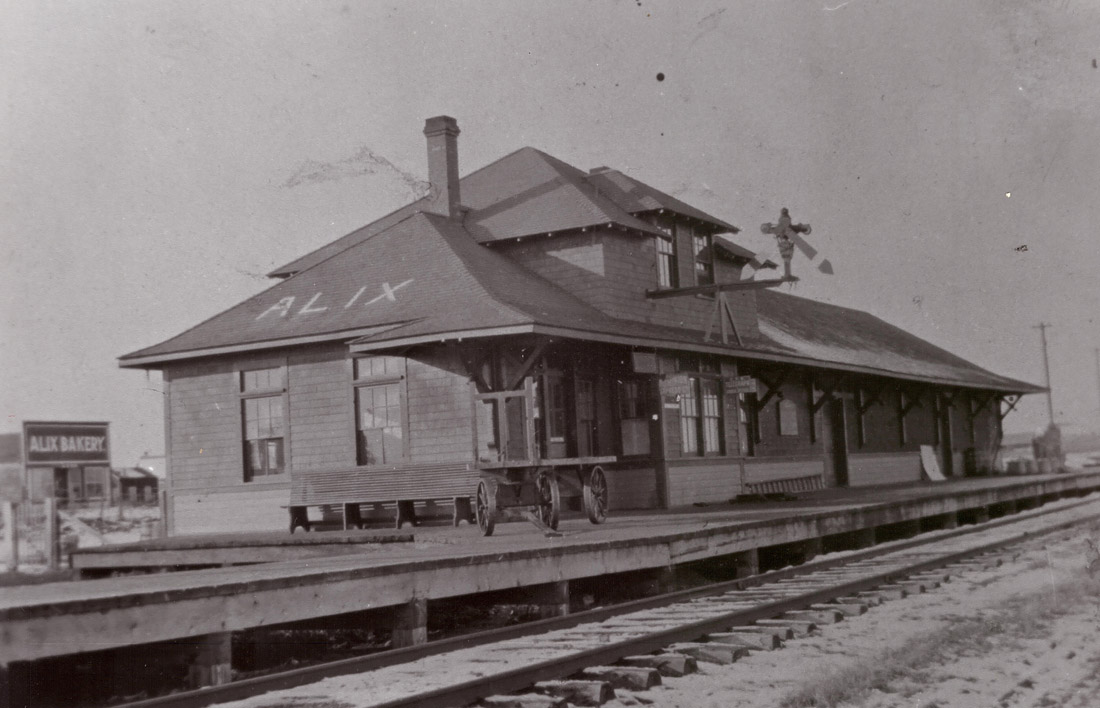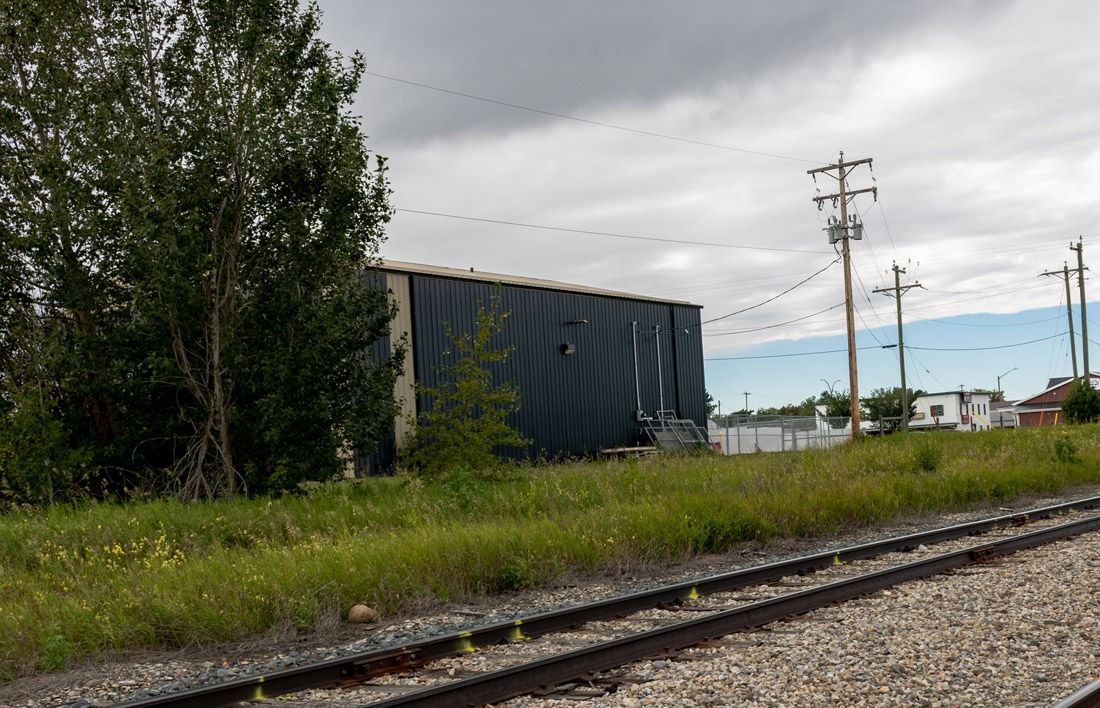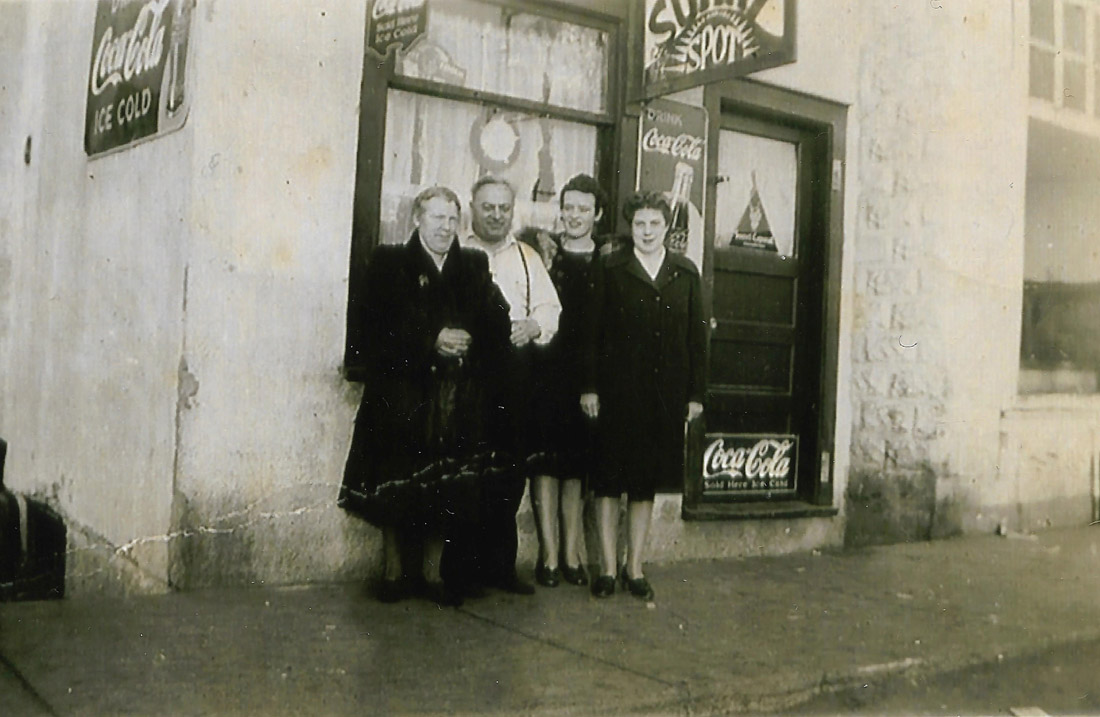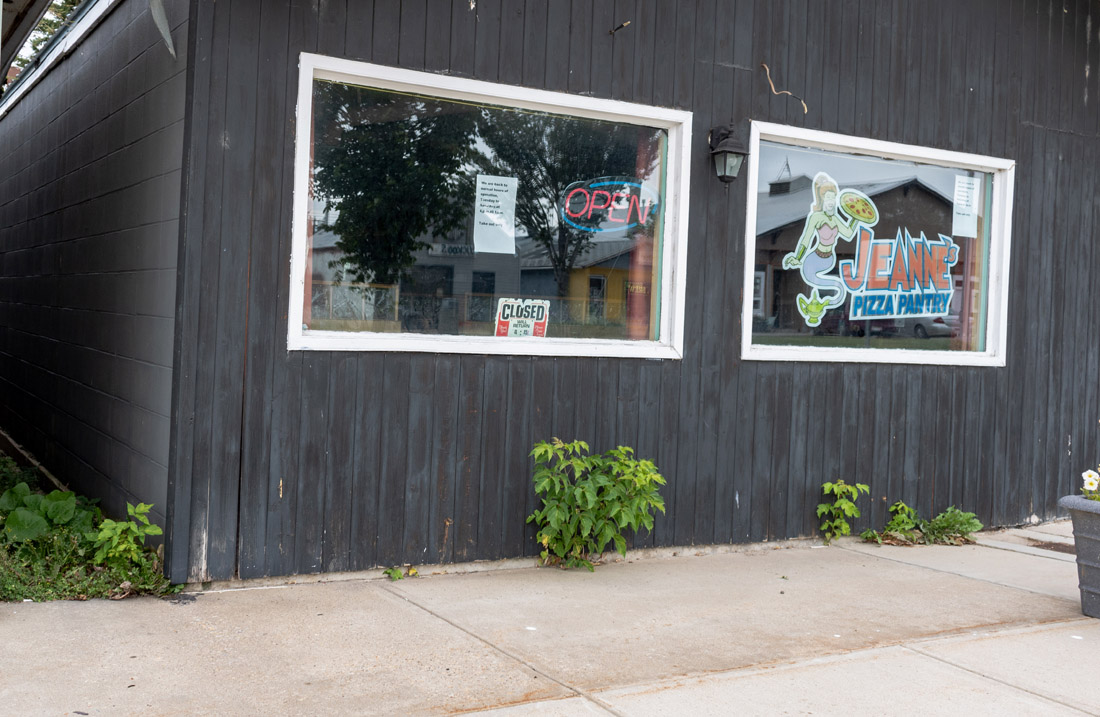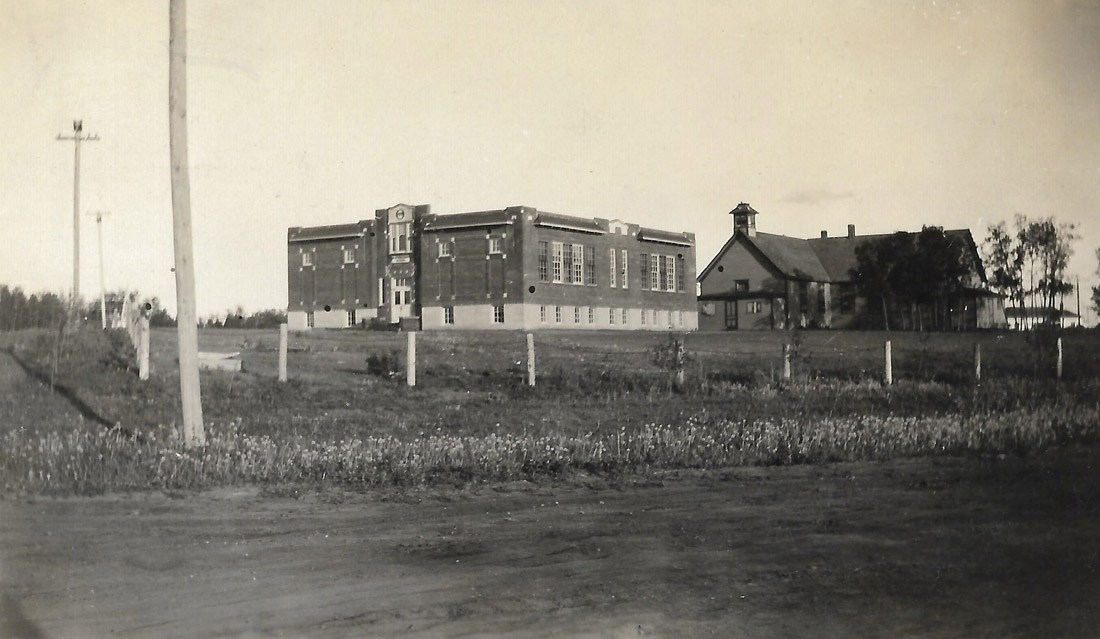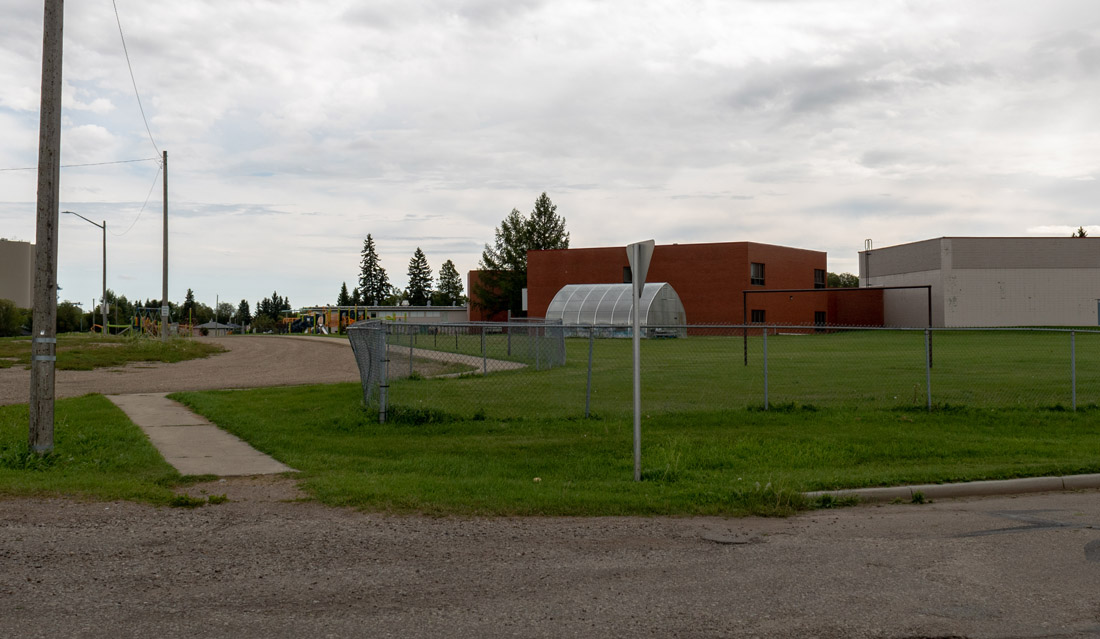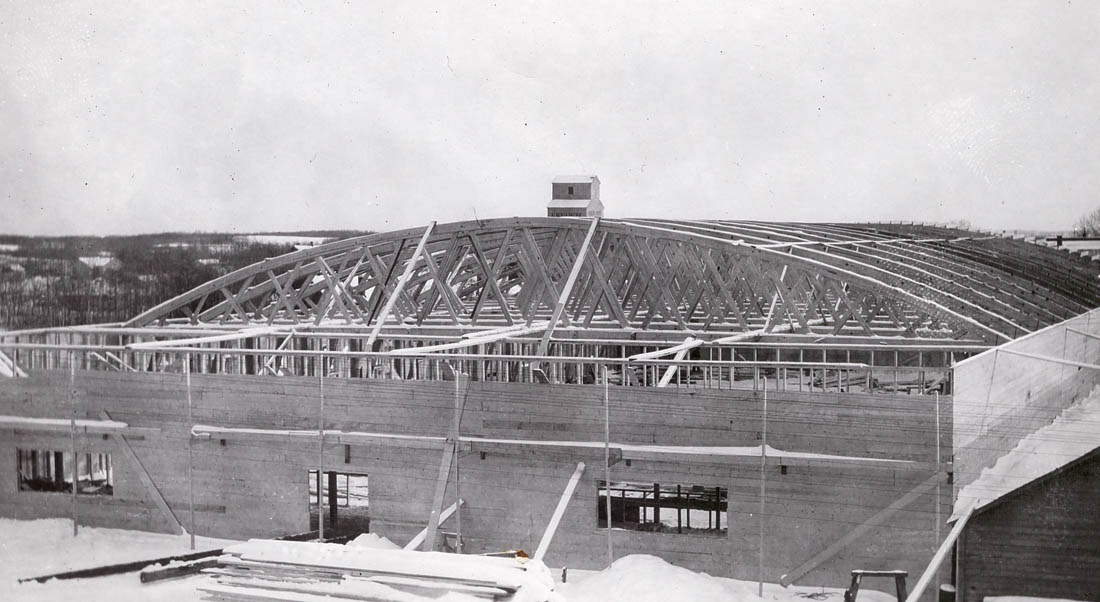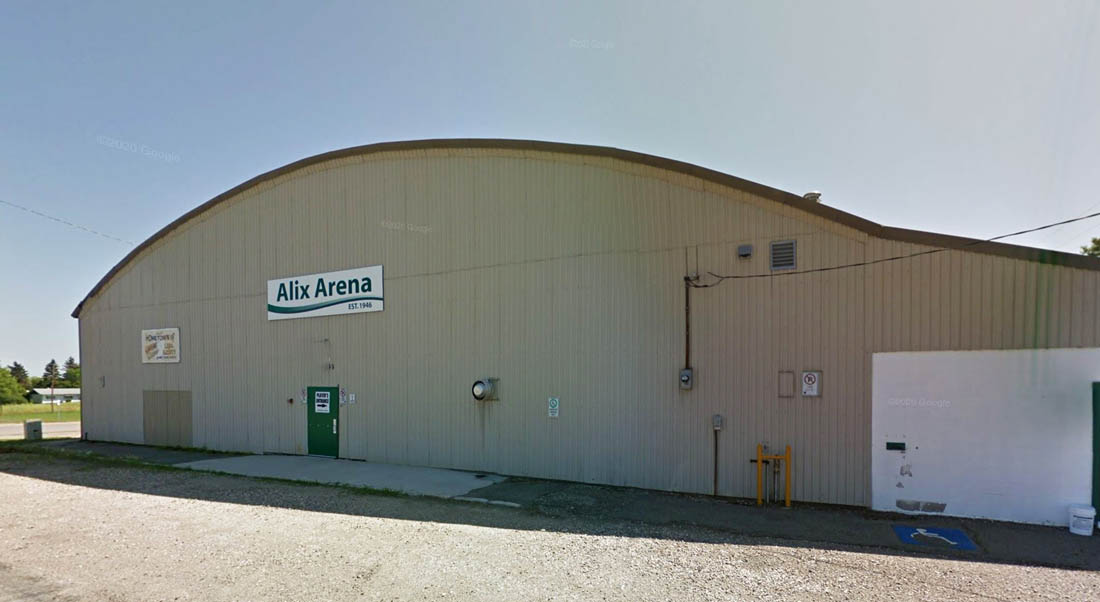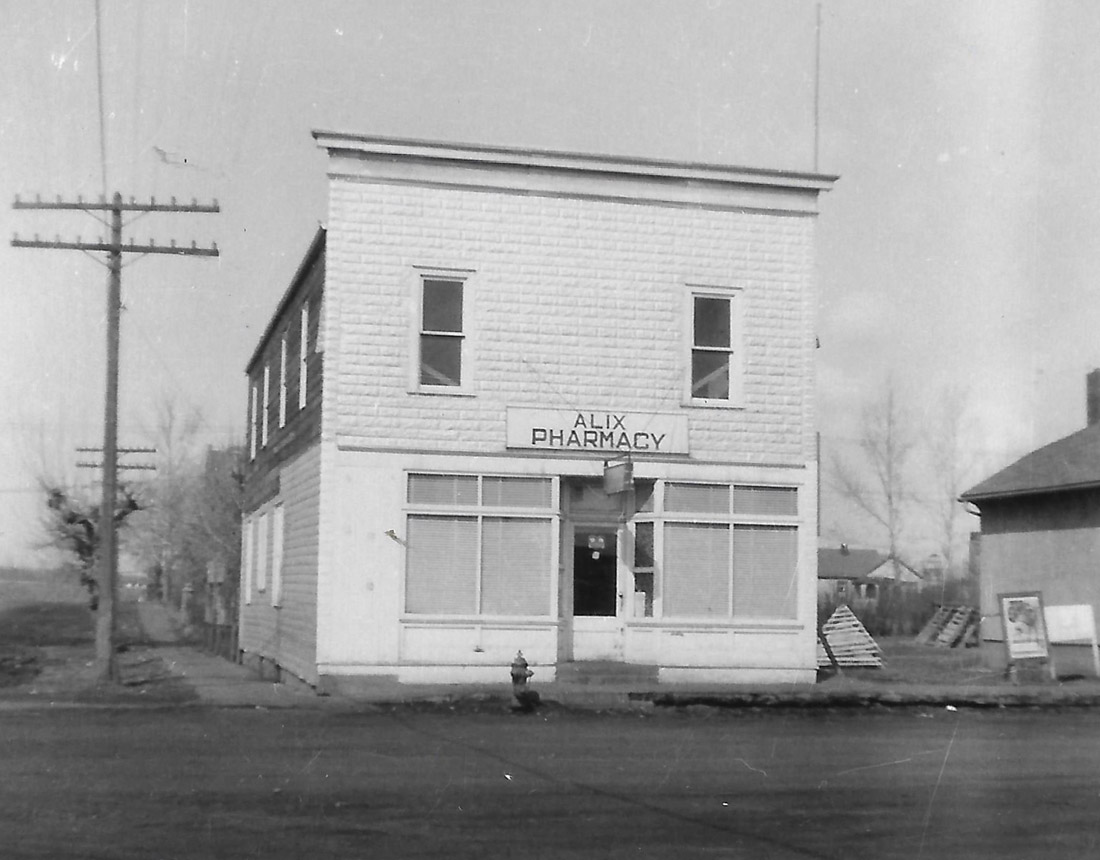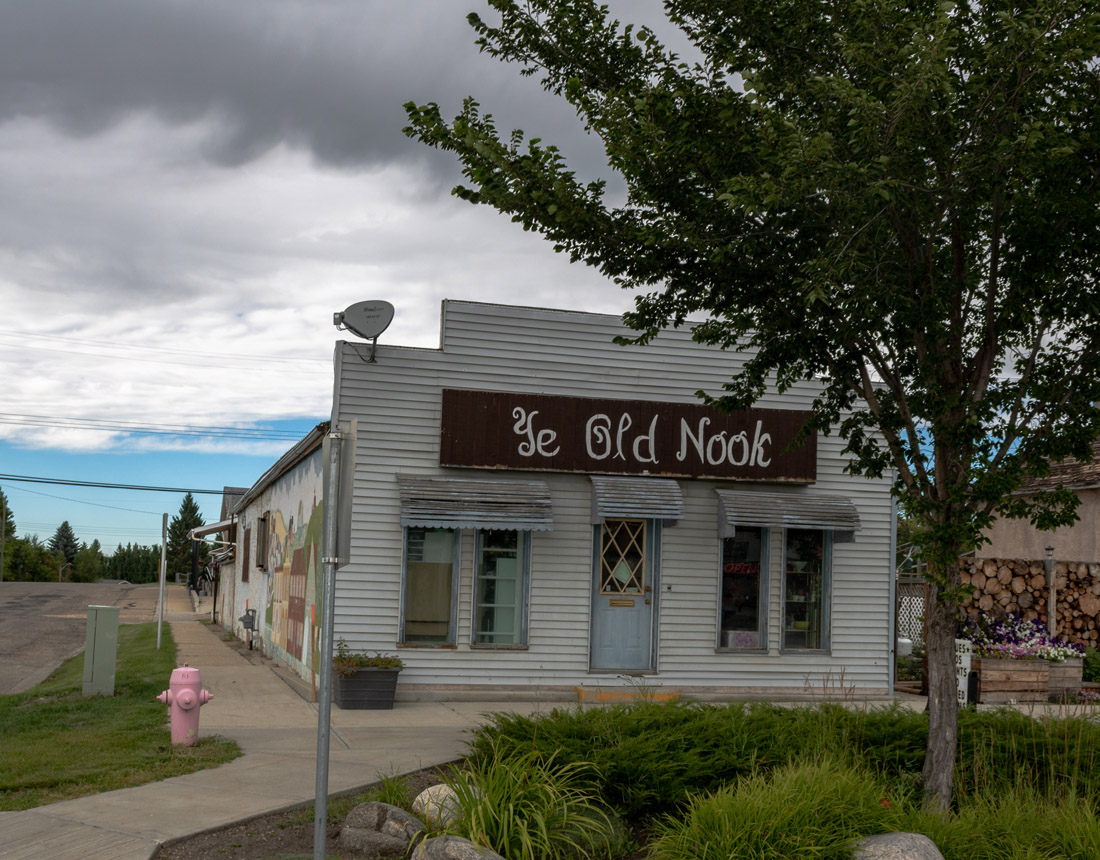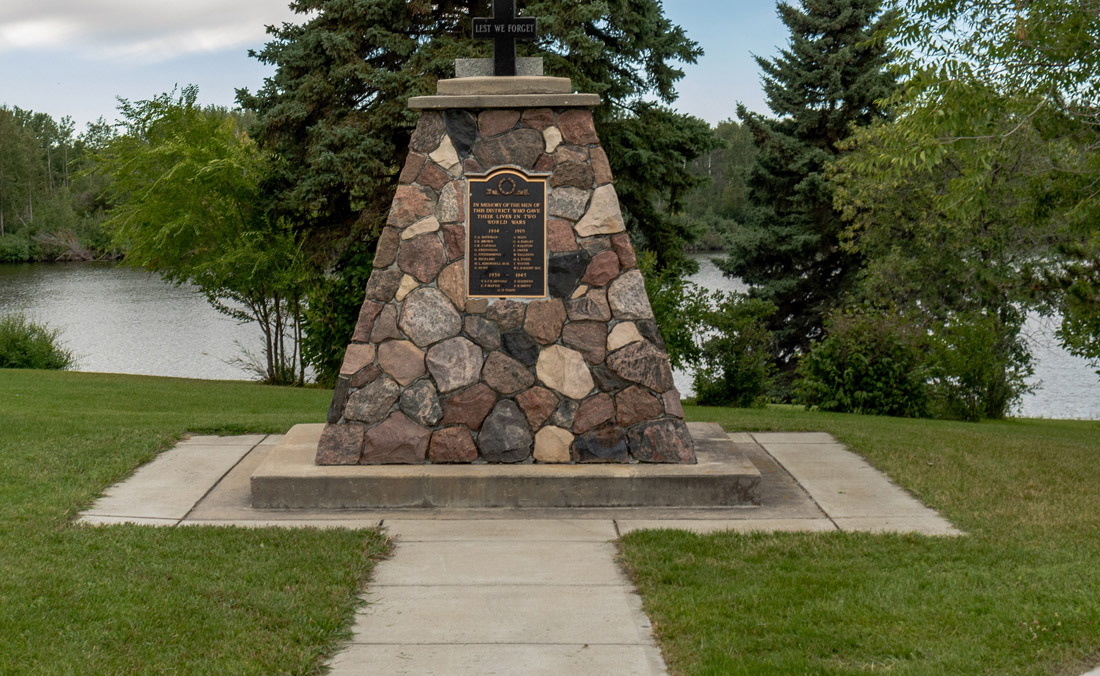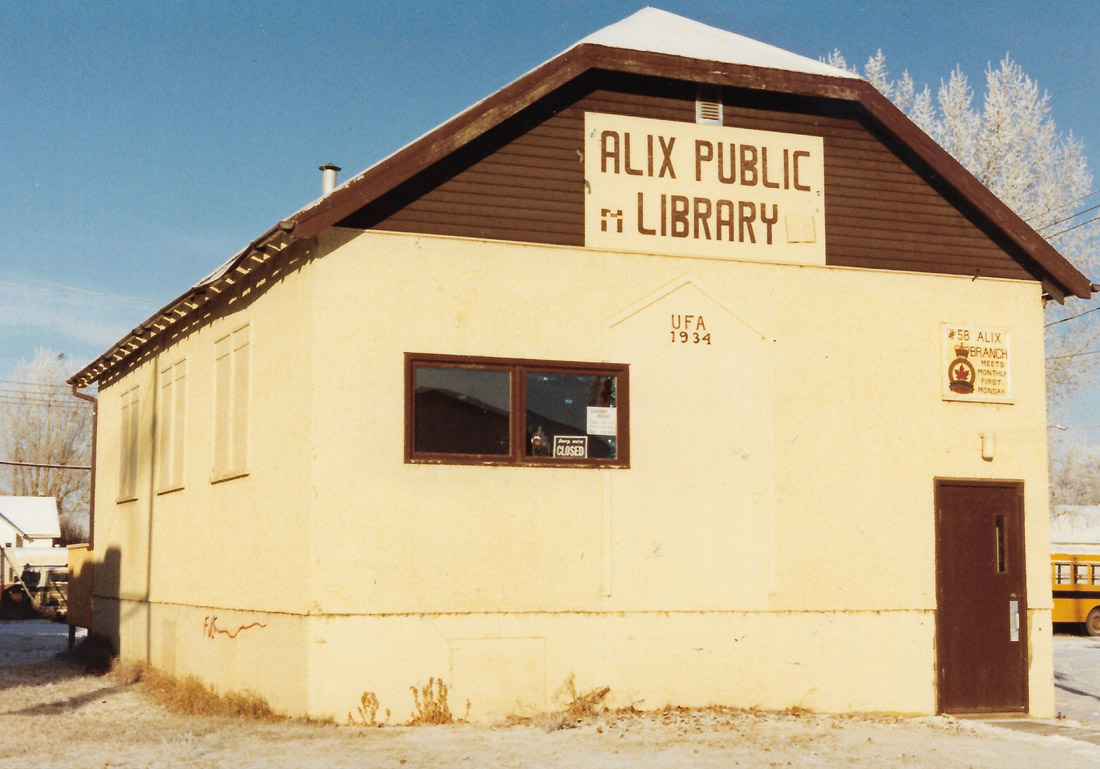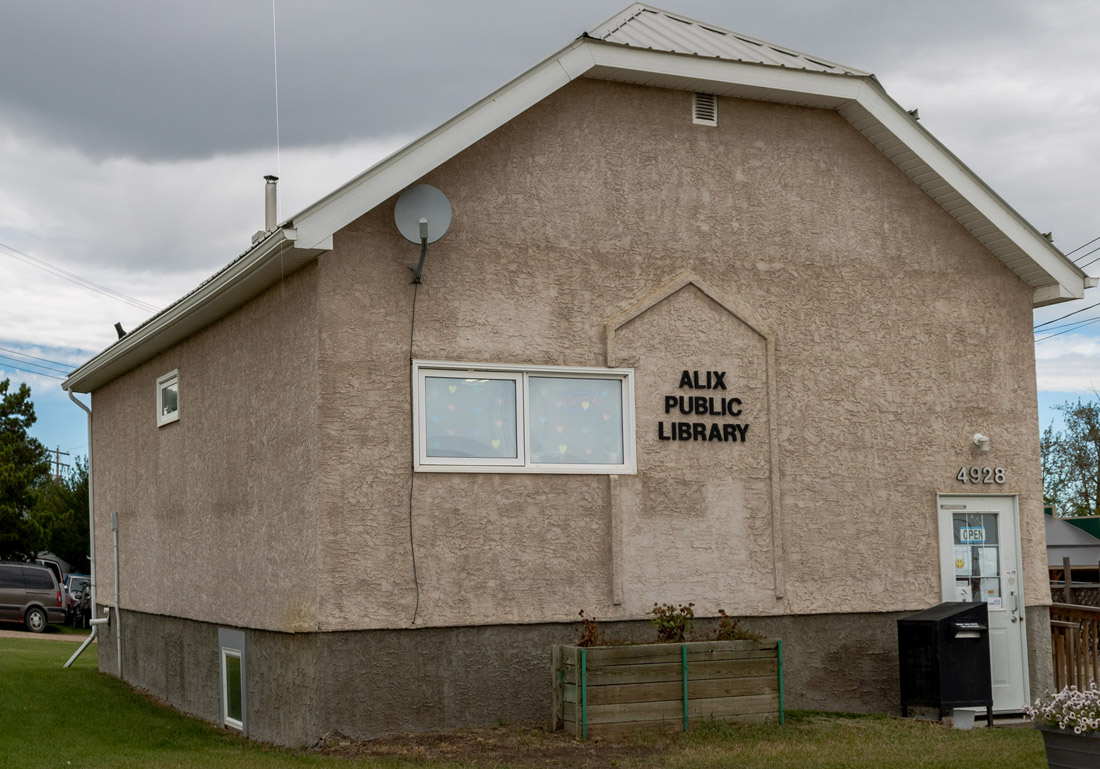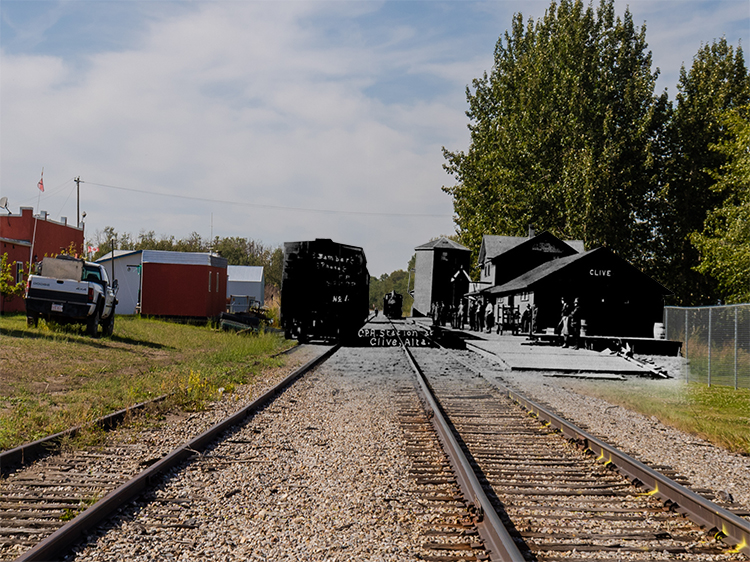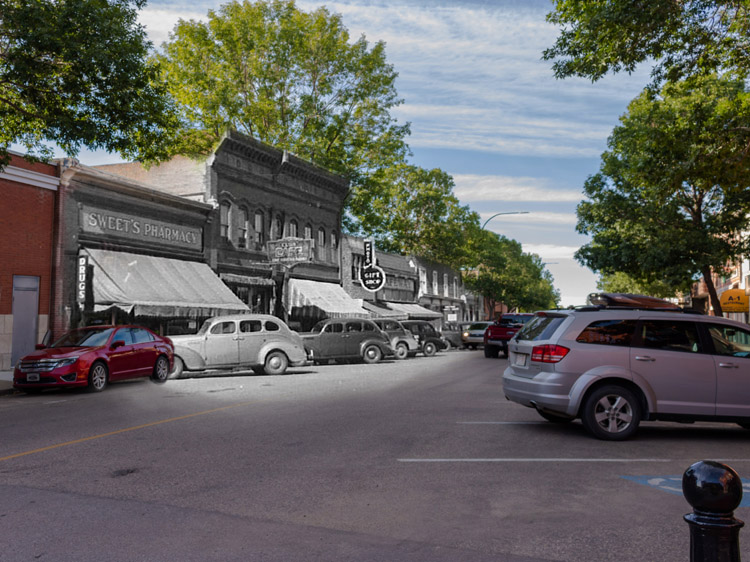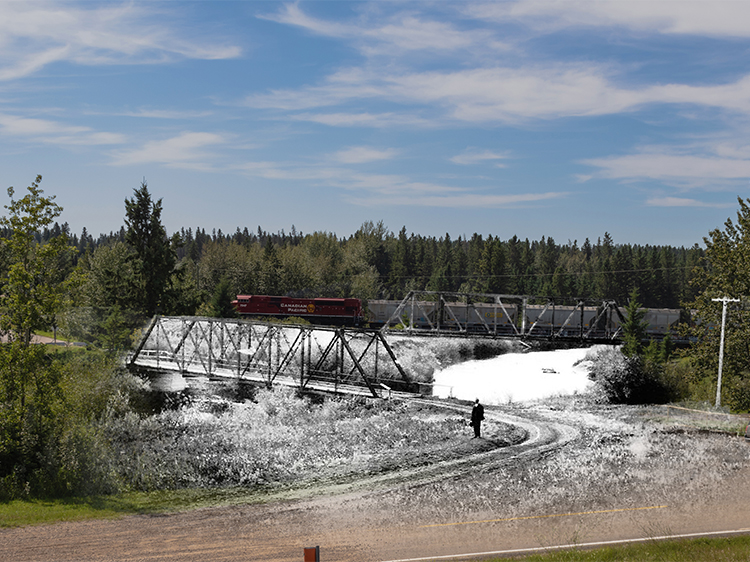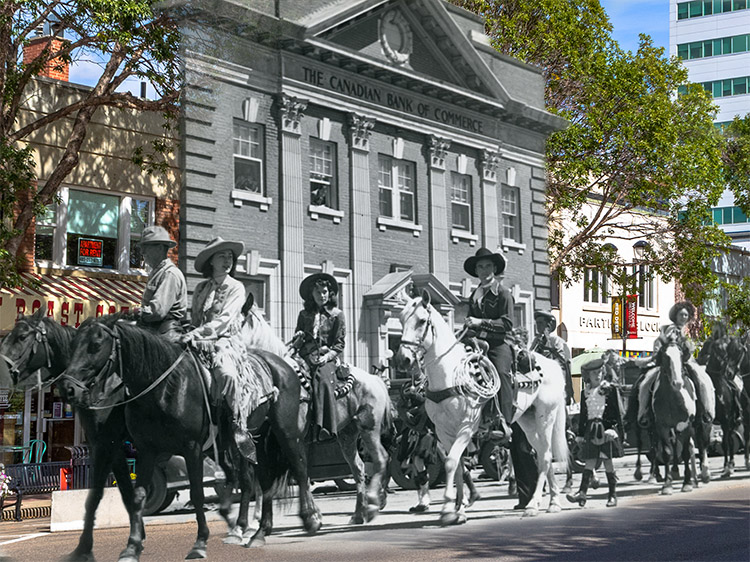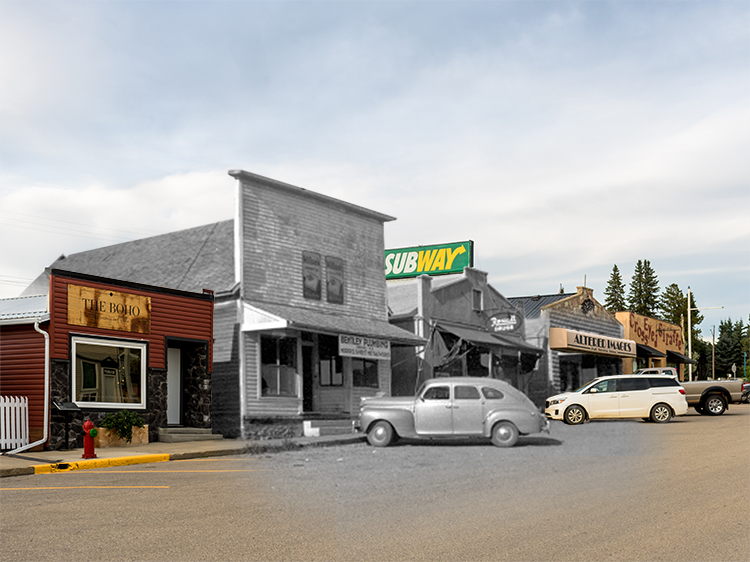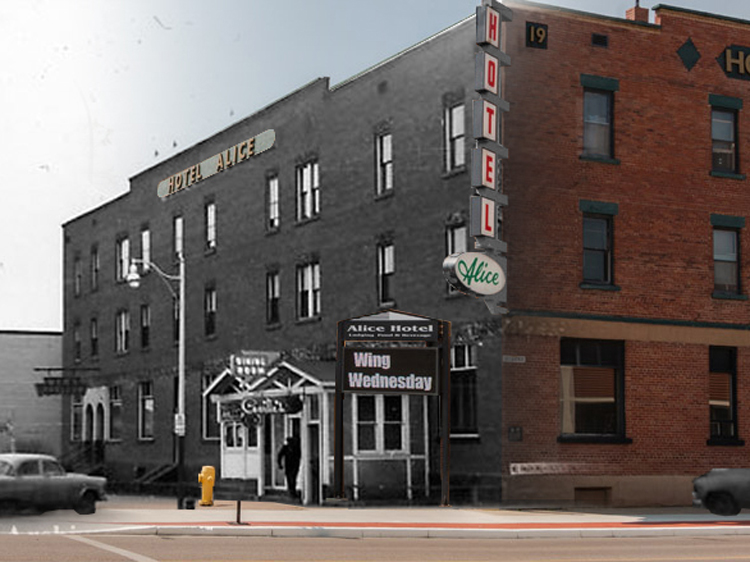Alix was originally named Toddsville after Joseph Todd who first came to the area in the spring of 1900 from Michigan. The original quarter, which the Todds homesteaded, eventually became the site of the Village of Alix. The Village of Alix was officially incorporated on June 3rd, 1907. As Canadian Pacific Railway was established in the area, the President of the Canadian Pacific Railway, Sir William Van Horne, changed the name to Alix, after the first white woman settler in the area, Mrs. Alexia Westhead. Alix was home to Dr. Irene Parlby, who in 1921 was appointed Minister Without Portfolio when she was elected to the Provincial Government. She is one of the "Famous Five", captured in the sculpture of that name, honoring women who gave outstanding leadership and service to the Province of Alberta.
This project is a partnership with Lacombe Regional Tourism, the Village of Alix, and the Alix Wagon Wheel Museum.
We respectfully acknowledge that the Village of Alix is on Treaty 6 territory, a traditional meeting grounds, gathering place, and traveling route to the Cree, Saulteaux, Blackfoot, Métis, Dene and Nakota Sioux. We respectfully acknowledge all the many First Nations, Métis, and Inuit whose footsteps have marked these lands for centuries.
Explore
Alix
Then and Now Photos
Alix Free Press
ca. 1910
The Alix Free Press began in 1906 under the supervision of Charles Frederick on the site where the post office is located today. After Frederick sold it to Si Andrews, he moved the press to a building beside the Red and White Store.
Meadow Creamery Co.
Staff and a delivery truck pose for a photograph in front of the Meadow Creamery Co, that once stood on this spot. The Alix Creamery began in 1916 when Mr. Niels Larsen opened the Meadows Creamery. The building had its own well and pumping system before running water became standard in Alix. In 1929, the UFA began the Central Alberta Dairy Pool. The pool became an essential business for the Village and farmers from all over central Alberta supplied the cream. On February 16, 1976 the building burned down and unfortunately, was never rebuilt, but the employees were transferred to the CADP in Red Deer.
Fire at the Creamery
1976
The Alix Creamery began in 1916 when Mr. Niels Larsen opened the Meadows Creamery. The building had its own well and pumping system before running water became standard in Alix. In 1929, the UFA began the Central Alberta Dairy Pool. The pool became an essential business for the Village and farmers from all over central Alberta supplied the cream. On February 16, 1976 the building burned down and unfortunately, was never rebuilt, but the employees were transferred to the CADP in Red Deer.
Community Hall
Originally the Methodist church, the first church built in Alix. Reverend Arthur Barner, the first minister, borrowed an ox-team to help haul stone for the foundation. The building was used by the local Legion until they handed it over to the Village to become the Community Hall. The Alix Lions Club collected donations, raised funds and did extensive renovations during the late 70s. The community worked together again in 2007, the 100th anniversary of the Village and of this building to save it from demolition.
Edgar's Hardware
ca. 1929-1944
Edgar's Hardware took over Alvin Thompson’s Hardware and Implement business in 1929. In 1944 Harold Edgar sold the business to Stewart McGimsey who later sold it to Glen and Fred Rouse who rebuilt the store and there have been many other owners over the years. The Hardware was expanded in 2005 to include the original Tim’s Variety Store building and has been operated by Curt Peterson since 1996.
Yarwood House
1956
The Yarwood house was built in 1905. Caleb and Christine Yarwood farmed near Alix for three years before moving into this house in 1913. Caleb joined the real estate firm of Cruikshank and Yarwood and Christine was a greatly respected Justice of the Peace for many years. Ralph and Nellie Toepfer were the next residents and moved into the house in 1944 with their family, where they lived there for many decades.
Pool Hall
The building was originally owned by Oliver Siddons who built a Pool Hall including living quarters and the White Lunch Café in 1929. His wife ran the café near the front entrance until Mrs. Walker took over for her. The pool hall was operated by Harry Odette who installed a barber’s chair to expand the business. The hall had a few successors, but the last was Ben Hangs. The Alix Wagon Wheel Museum Association took over the building in 1974 and renovated it to meet museum standards. The mural was painted in 2009 by the artist, Dream Weaver. Before purchasing the building, the museum operated out of the Drop-In basement.
Sims Livery
1904
Operated by John W. Sims and was situated behind the Arena across from his family residence. It was erected in 1904 and was one of the first buildings to be built in Alix.
Sunny Spot Cafe
Owned an operated by John "Pop" Walper and his wife, Elizabeth. The site is now home to Jeanne’s Pizza Pantry.
The School
The first school in the Village was built in 1906, with Mrs. Campbell as its first teacher. As the Village grew, the enrolment grew and by 1910, there were two teachers. In the fall of 1929, construction began on Alix Consolidated which was a four-roomed brick building. The school had been added onto but was partially demolished in a renovation in the 1980s when it was joined to the Alix MAC Central High School built in 1966 to accommodate students from Alix, Mirror and Clive. The original one-roomed school has become the Lions Den on 49th Ave.
Alix Arena
1946
Built in 1946 by a group of energetic volunteers from the Village of Alix and surrounding area. Prior to the building of the arena there was an outdoor skating rink and a curling rink on the site. On boxing Day December 26, 1946, the first game of hockey was played in the arena, fifty days after the project was initiated. This is one of the oldest arenas in the province still in use.
Alix Pharmacy
1950
Originally operated by Mr. Ferguson during the 1920s. It was sold to a couple other operators before Angus Lundy took over the business during the Second World War. In 1947, Elizabeth Baardseth and her brother, Walter Ekman, bought the business and operated it until 1963 when they traded the business and building to the Rouse’s for their house behind the current hardware. The Rouse’s renovated the building by taking off the roof and digging out the basement and in 1965, the name was changed to Rouse’s Sundries. The building was located on the current site of Ye Old Nook.
The Cenotaph
1955
Unveiled by the Legion Provincial President, W. O’Rourke in 1953. The bronze Plaque lists the individuals of the Alix district that gave their lives during both World Wars. The cenotaph was rededicated in 1980, when the Alix Legion had it moved to its present location by Alix Lake to expand their hall (now the Community Hall).
The Library
ca. 1970
Rebuilt with the assistance of volunteers c. 1929-1930 when the original UFA/Library building burnt down. Through the years it was used as the UFWA hall with a library upstairs. The local Legion used the basement as a meeting hall after turning over the building they owned to the Village (now the community hall). When the Legion joined with the Clive group, the building became exclusively a library.

